Marine scientist and big-wave surfer Katie McConnell on proven solutions for ocean conservation, U.S. climate policy, and the wonders of corals.
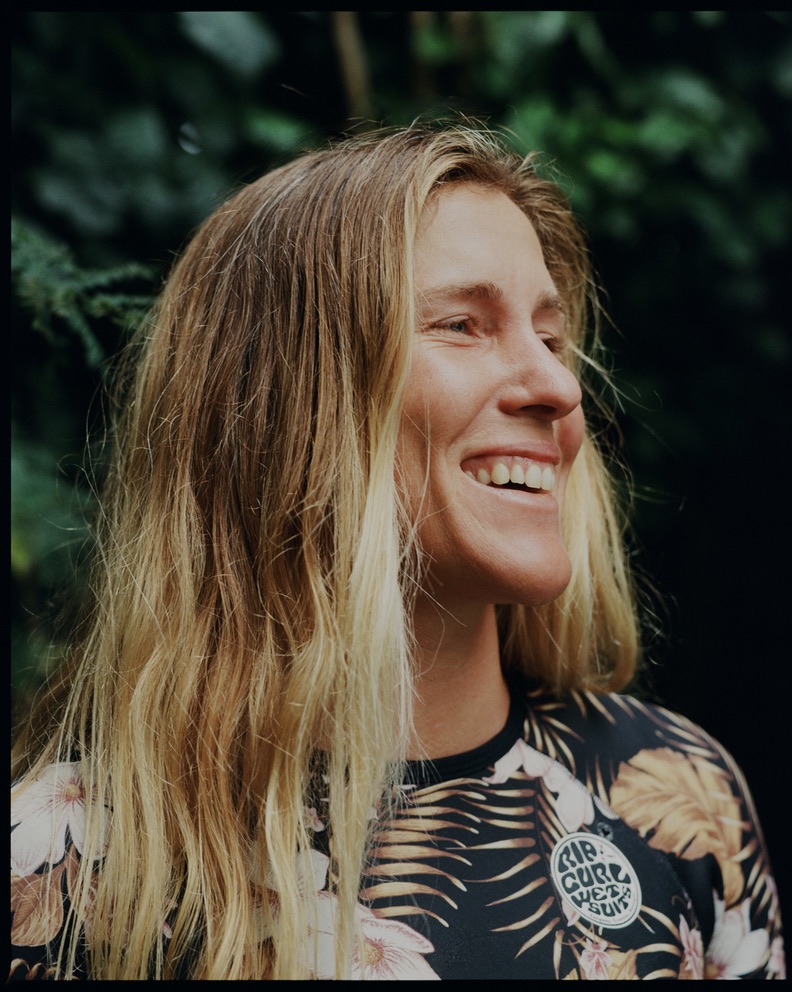
A marine scientist, research diver, teacher, and professional big-wave surfer, Katie McConnell is as comfortable talking Mavericks as she is breaking down the climate crisis. She grew up in Encinitas, California, “the tiny wave capital of the world.” And, before her big-wave career took off in 2020, she studied Marine Biology and Microbiology, and worked as a researcher and educator in marine ecology and resource management. Her path has been shaped by her grandfather, John McConnell—a peace activist and founder of the original Earth Day—who created the Earth Flag as a symbol of global unity. Katie remembered how he would sign off on phone calls with the words: “peace, justice, and care of the earth.”
Today, Katie integrates these values into her environmental work—participating in marine research, supporting community-led initiatives, and helping others find empowerment through their relationship with the ocean.
Connecting with the Ocean
“What always amazes me is how much life is going on down there. Trillions of little interactions, all happening at once.”
Lukas Brunner: Katie, you are a marine biologist, teacher, scientific diver, and a professional big wave surfer. To begin with, tell me about how you fell in love with the ocean.
Katie McConnell: From a very young age, I loved being outside in nature. Going back and forth between my divorced parents’ houses, I was always looking for peace—and that’s what I found in nature. Once I caught my first wave in high school, I was completely hooked—it was the best feeling ever. That’s when I really started to feel that connection with the ocean.
When I got to university as a musical theatre major, I took the easiest math class I could find to satisfy the general education requirement—it was called The Oceans. That class took us down to the tide pools at Natural Bridges State Park (Santa Cruz, CA) to do basic biodiversity surveys—counting sea stars and anemones. I was so fascinated, I immediately switched my major to marine biology. The rest is history—I totally fell in love with marine ecology and teaching.
LB: What is big wave surfing and how did you get into it?
KM: A “big wave” is totally relative to someone’s confidence level, their ability, and the conditions of the day. Although in the sport, big waves are generally defined as having a 20-foot face or bigger.
For me, big wave surfing started because I happened to live in an area where the ocean was often heavy and waves were pretty big. I just wanted to surf every day, because I love being in the water no matter what. It’s really become a whole new life path for me, and I love it. I still can’t believe I’ve only been surfing big waves since 2020, and yet my life is totally different now.
LB: As a scientist you don’t only spend time on waves, but also beneath them. What’s something you would share with surfers who focus only on what happens above-water?
KM: As a research diver, my job is often to count everything that’s there, from invertebrates and algae, to fish. Then we use that data to monitor changes over time. Through those long-term ecological monitoring studies, you start to see patterns—different cycles, impacts, and responses in the ecosystems. Some cycles take up to 10 or 20 years of studying to notice.
It’s funny, because every time I dive a spot, I descend and the water gets a little cooler. You’re immersed, you start looking around, and it’s actually really loud—you hear the crackling of the fish, the coral, the sand, and your own breathing. What always amazes me is how much life is going on down there—trillions of little interactions, all happening at once. That’s something I’d tell above-water surfers to experience if they can. It really gives you another perspective.
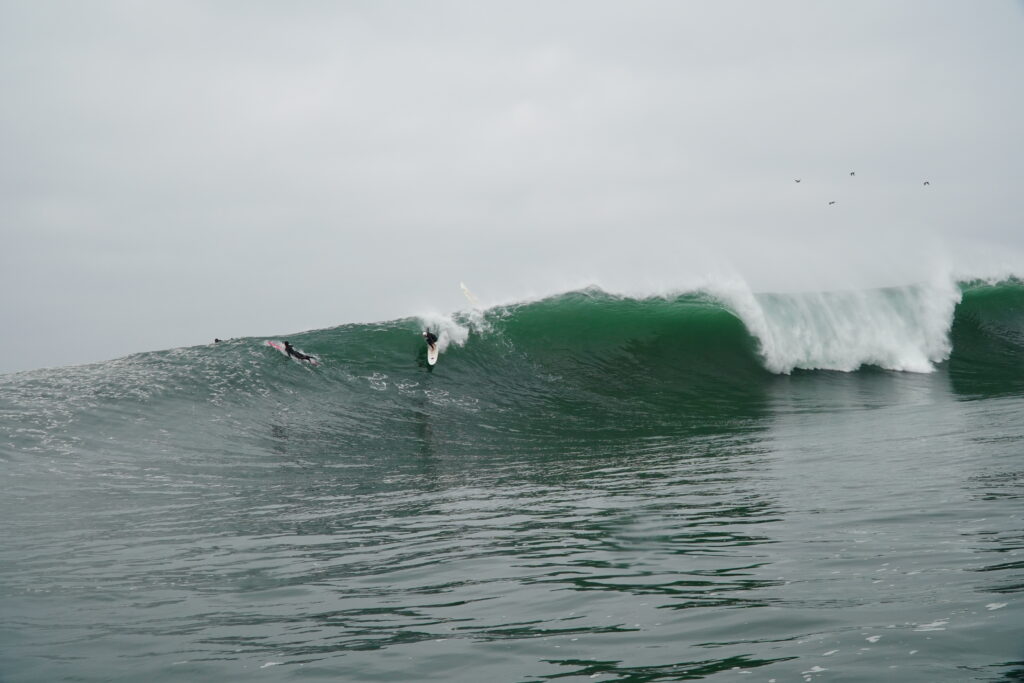
LB: You’ve studied kelp forests, fjords, and reefs. Why are coral reefs, in particular, such a central concern and what changes are you documenting?
KM: One of the hardest things for me is seeing the decline of coral reefs. Coral reefs cover less than 1% of the seafloor, they are home to an estimated 25% of all ocean life. Corals are foundational for biodiversity, and biodiversity is essential for healthy, resilient ecosystems—which are essential for all life on the planet.
The Great Barrier Reef, for example, is the largest living structure in the world. It stretches across over 1,400 miles and spans ~133,000 square miles–you can even see it from space! Approximately 1 Billion people directly depend on healthy coral reefs. Even if your daily life doesn’t seem to depend on one, we’re all still connected in some way, and we still need them–think about thriving fisheries, medicine, global cycling, the list goes on. And besides all that, can we agree that corals are just awesome? We always talk about the value of nature in terms of materials or resources, but I really feel like some things are intrinsically awesome—just by existing.
Many scientists from around the globe say that corals are likely the canary in the coal mine. Since corals are so sensitive to changes in their environment, if they’re dying, it is a warning to us about bigger issues on our plate and horizon.
In efforts to both preserve and restore corals, we now have coral nurseries all over the world. There are projects even trying to breed heat-resistant corals, and heat-resistant Symbiodinium, which are the little organisms that live inside corals and give them nourishment and colour. But is the answer really to engineer everything to accommodate our exploitative and destructive patterns? We need more people to consider what our world would be like if we actually lived in harmony with it all. There is so much work being done to study and save coral reefs, yet the most important component—curbing our carbon emissions and neutralising human-caused climate change—has not yet happened.
Protection Works
“Conservation is a practice; it has to be cultivated and cared for, just like a garden.”
LB: Can you share a bit about environmentalism within the surf community and the concepts you engage with as a volunteer with the Save The Waves Coalition?
KM: Surfers in general—and this is even backed by research—participate more in environmental and conservation causes than the average person. They tend to be more pro-active stewards of their environment. Surfers really are an important player in this. On the other hand, there can still be a lack of knowledge.
I’m really excited to be volunteering with Save The Waves Coalition to raise awareness about the concept of surf ecosystems, Surf Protected Areas, and Surf Protected Area Networks. It’s been really successful in bringing local coastal communities together, unifying them to stand up and protect their waves—and the ecosystems that come with those surf spots.
Just like we have a kelp forest ecosystem or a desert ecosystem, a surf ecosystem is based on a surfable wave and everything surrounding it. This includes all the abiotic, non-living factors—like the bathymetry, the coastal landscape, if it’s a point break, beach break, reef pass, or other type of wave, currents, tides, swell windows, wind—all of it. It also includes the biological communities of the sea, the intertidal zone, and the land, and, of course, the human communities, which encompass our development, culture and everything that comes with human life. Surf ecosystems are inherently complex and diverse, since they are quite literally at the land-sea-sky interface.
Therefore, if you protect a wave and your surf ecosystem–you’re protecting several integrated systems all at once. Just like we have marine protected areas and marine protected area networks—which coordinate and scale locally led conservation plans—you can do the same with surf protected areas. Conservation is a practice; it has to be cultivated and cared for, just like a garden.
But it’s a really tough time right now for conservation and for the Earth. I’m seeing my own country completely roll back environmental protections for short term profits in privatised and destructive industries among other things.
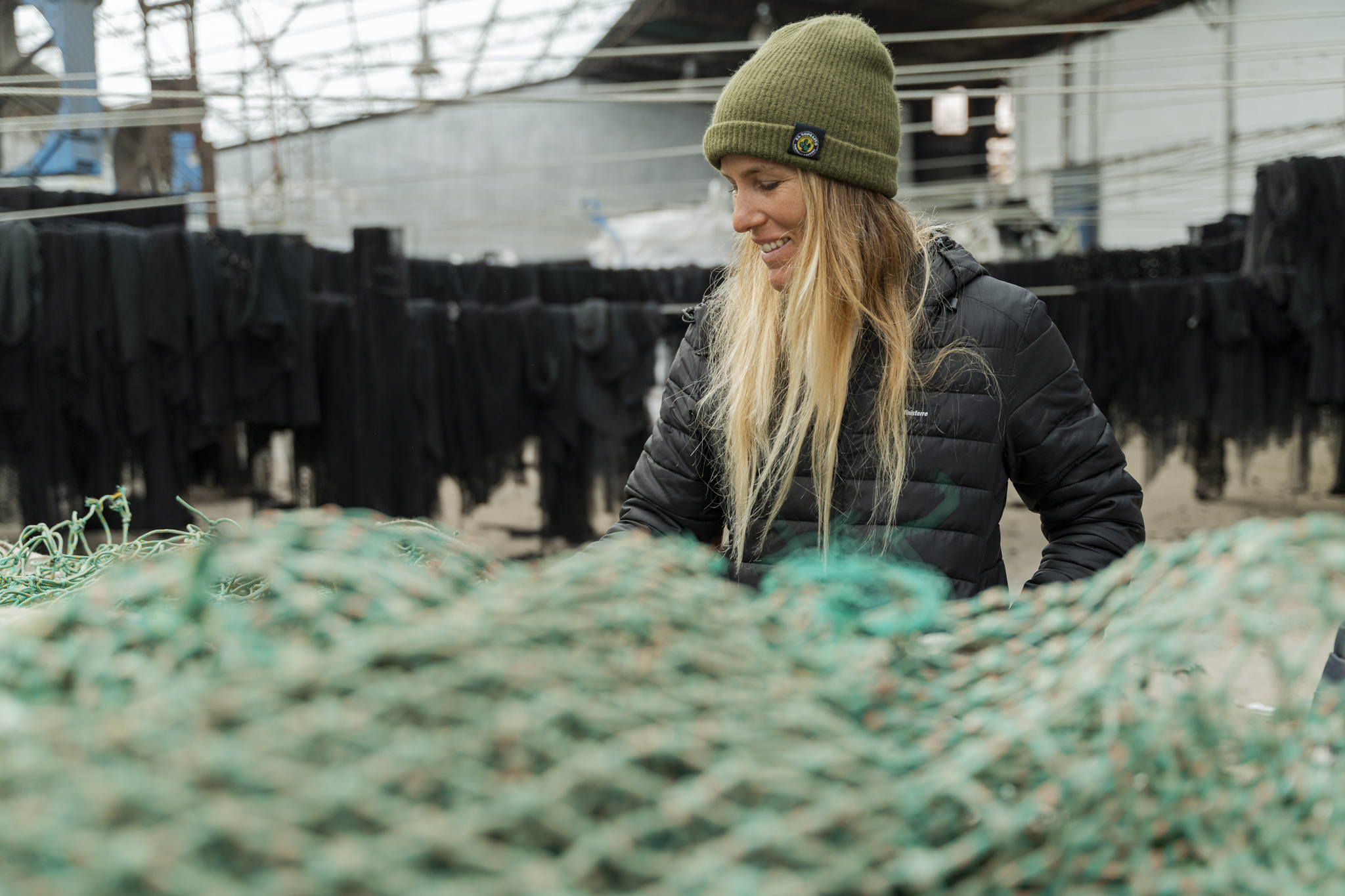
LB: From defunding and cutting jobs at the National Oceanic and Atmospheric Administration, opening up the Pacific Remote Islands Marine National Monument (PRIMNM) to commercial fishing and promoting deep sea mining, there has been a clear rollback of protections and institutions central to maintaining healthy marine ecosystems. What has the response been in your community when it comes to people’s engagement?
KM: It’s pretty wild. I think everyone in the U.S. is feeling overwhelmed—because from day one it’s just been topic after topic, injustice after injustice, like a flood.
What we’re facing is so intense that it feels like people are triaging what to even engage with, because there are protests all the time and no shortage of things to paint on a sign. It’s like a full-time job just trying to stand up for what we thought was given under our constitution. Everything is uncertain—that’s a challenge, no doubt, but also it’s an opportunity. But at least people are engaging now, maybe more than before. And maybe that’s part of what we needed all along and why we got into this mess in the first place. It really comes down to finding what resonates with you and jumping in. Every little bit helps. Literally, pick anything.
The Importance of Local Stewardship
“When ecosystems heal, people heal too.”
LB: You’ve dived in protected areas and seen communities steward their own natural resources. What have you witnessed in terms of ecosystems bouncing back, both in the ocean and on land—and how does that connect to global goals like 30×30?
KM: Even scientists often underestimate how fast ecosystems rebound once protections are in place.
The first time I saw it with my own eyes was in Micronesia, in the small outer atolls of Yap. The communities there were losing their fisheries and, amidst a new era of rapid change and globalisation, couldn’t figure out what to do. A group of fish biologists came through, conducted underwater surveys to determine which fish were present, and shared the data with local chiefs, who discussed it at atoll-wide meetings. That’s when Elders recalled nearly-forgotten traditional ecological management practices—which actually inform many marine protected area practices we use today.
This has happened on land too. On the Klamath River in Northern California, dams built a century ago devastated salmon and the Native communities who depended on them. Within living memory, those people experienced genocide and ecological destruction from U.S. colonialism. Between 1918 and 1964, a series of dams cut off vital spawning grounds and polluted the river, causing a century-long disaster. After generations of activism, the two biggest dams finally came down last year—the largest removal project in history. Almost immediately, salmon returned in numbers far greater than expected. It shows that when ecosystems heal, people heal too.
That’s why 30×30 excites me—protecting 30% of land and sea by 2030. We know Marine Protected Areas work: they create spillover effects that boosts fisheries, protect biodiversity, and promote quick recovery. Protecting critical habitats—nurseries, feeding grounds, migration routes—is especially powerful. There are creative approaches, too: patchworks of protected areas, rotating zones like crop rotations, scaling local successes globally. And we must learn from Indigenous stewardship––it’s millennia of knowledge guiding us.
Creating protected areas is a complex science and art that spans multiple disciplines of expertise, and there is no one-size-fits all. It is up to the local level to be thoughtful, thorough, and committed. Ultimately, it starts locally. Every action counts.
“We know Marine Protected Areas work: they create spillover effects that boosts fisheries, protect biodiversity, and promote quick recovery. Protecting critical habitats—nurseries, feeding grounds, migration routes—is especially powerful.”
LB: What are the biggest challenges to making marine protected areas truly effective, and how do communities respond to their own potential?
KM: Maybe the challenge is both in creating a protected area and in managing it. First, in conservation we ask, “What do we want to give to future generations?” Answering that requires cooperation and consensus across stakeholders with different histories and relationships to the place. Coming together where we agree is paramount.
But even once an area is designated, long-term success can be difficult. Enforcement is a big one—poachers still go into no-take zones because of gaps in accountability and trust. Industrial fisheries also exploit loopholes. For example, in many MPAs the language never explicitly included seafloor protections, which opened the door for destructive practices like bottom trawling and mining. That has disastrous effects.
We also need to think of MPAs as both closed systems and open ones, influenced by larger forces. We might protect an area from overfishing, but what about climate change? I always think back to the chief in Ulithi Atoll asking, “So we recovered our fish, but what do we do about sea level rise?”
On the community side, I think motivation is often there, but people don’t always know where to start. Recently in Matanzas, Chile, I was invited to give a talk on surf ecosystems and effective conservation. The locals cared deeply about sustainability but wanted global examples and tools. Sharing those stories sparked questions, and my local partner—a lawyer working on the legal framework—helped turn it into an actionable roadmap. That was really constructive. And the key part is: they asked me to come. I wasn’t evangelizing.
As surfers, I think we still underestimate ourselves. The Surfrider Foundation is proof. It’s huge, surfer-led, and powered by thousands of volunteers worldwide. They’ve created real impact at multiple scales. That shows how much our community is capable of.
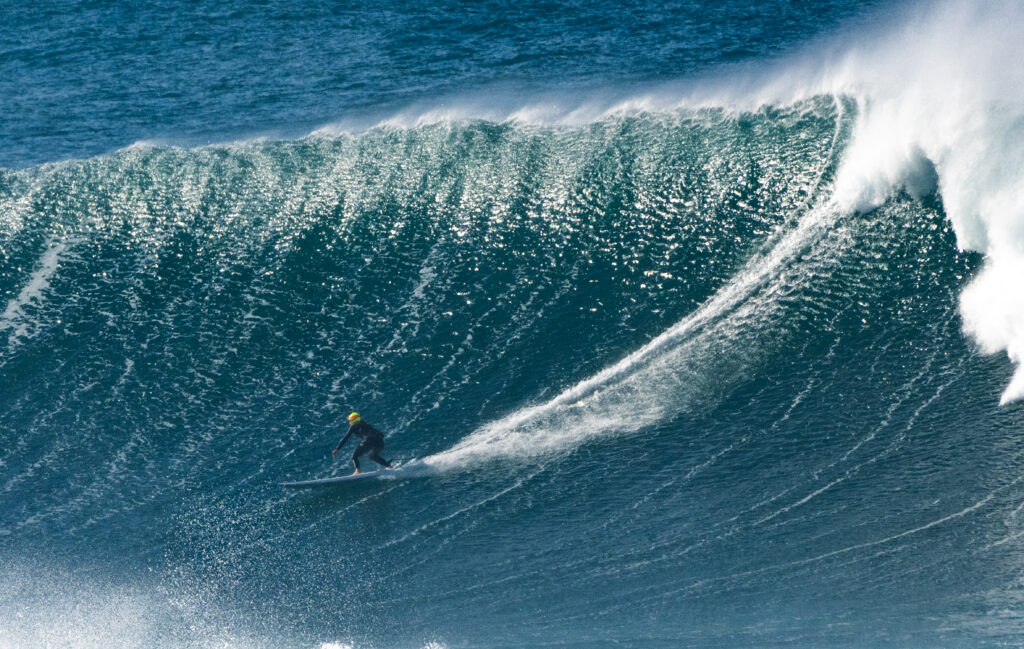
Education and the Power of Awareness
“Education, connecting with, and empowering the next generation is absolutely integral—if not critical—to effective conservation.”
LB: As someone who has spoken to a lot of different people about climate issues, I’m personally curious—have you heard that argument: “The climate is constantly changing and has been forever”? It’s one of those statements that has some truth to it but seems to suggest that climate change isn’t really that bad. How do you respond to that?
KM: When I hear that, it honestly confuses me a little. Yes, the climate does change—but it does so over very long time scales. There is an overabundance of science that is incredibly clear that human activities are warming the earth much faster than natural cycles ever have, and we’re shifting ecosystems into new conditions at such a pace that we are triggering the sixth mass extinction– making parts of the world unlivable for countless species—including humans.
Studies show the communities who contribute the least to climate change are often the ones who are the most vulnerable to its impacts. It’s huge that the United Nations just last week ruled that the biggest contributors to climate change have a larger responsibility to help countries affected by it. I am excited to follow how this will play out. Go Vanuatu!
I think a lot of the people who say things like that are under the illusion that they’re somehow insulated from the effects of these changes.
And it’s not just about carbon emissions. Symbolically, it’s really about the way humans are behaving at-large, creating toxic and violent conditions all over the planet for shortsighted illusions of money and power. Even beyond warming and changing weather patterns, we’re flooding islands, wiping out habitats, driving species to extinction, and decoupling life-giving planetary cycles.
So when people say that “the climate has always changed”—they’re not technically wrong, but it lacks context. And, I think, it also lacks empathy.
LB: As a teacher, what role do you see education and sharing your love for the ocean with kids as part of broader conservation work?
KM: For sure teaching is a form of conservation work. It wasn’t until I worked in the U.S. public education system that I realized how authoritarian it can be. As we continue to defund it, we’re gutting our collective future. Teachers are paid dirt, yet some schools succeed only because good teachers and staff show up every day and go the extra mile.
I see the authoritarian defunding of public education as an intentional gutting of our collective future. It’s an attempt to replace it with an educational model that is blindly nationalistic and discourages questioning and diversity. Now, they’re even censoring words like equality, colonialism, and racism. If we can’t take a hard look at these issues, how are we supposed to heal and avoid repeating the same mistakes?
That’s also why I love working with kids. I ask them what kind of world they want to live in, and honestly, they’re my greatest teachers. Education, connecting with, and empowering the next generation is absolutely integral—if not critical—to effective conservation. Greta Thunberg and the student protestors are the voice of our future.
LB: To finish, Katie, I want to circle back to surfing. How do you envision the future of surfing and conservation?
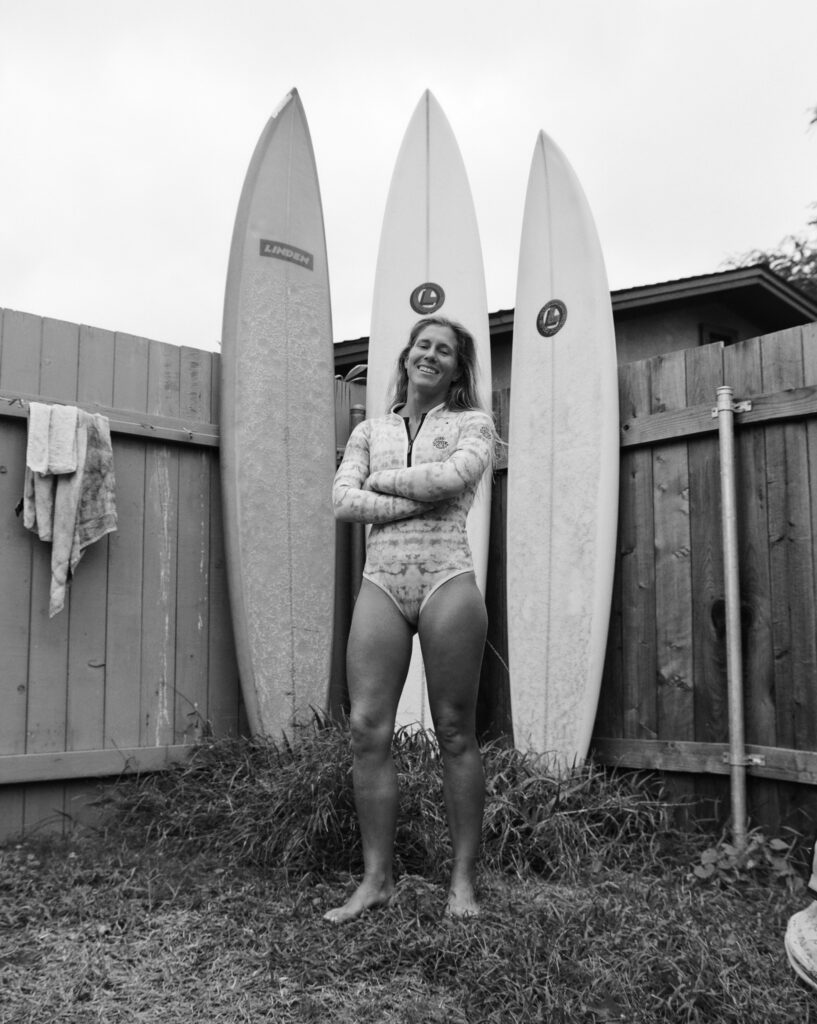
“It all really comes back to what my grandfather always told me: ‘Peace, justice, and care of the Earth.'”
KM: Well, I would love to see what would happen as we collectively explore, like surfers, the idea of harmonising with nature as much as we can.
Do you remember in math the idea of an asymptote? It’s a line that a graph of a function approaches but never actually touches or intersects—the graphed curve, although it never arrives at the asymptote, it gets infinitely close. To me, the idea of infinitely close is interesting in that eventually it is so close it is, in a way, indistinguishable. So, even if it might be impossible for us to get there, what does infinitely close to peace, justice, and care of the Earth look like?
In the same way, simply getting people out into nature, immersed in it, is so important, and it would naturally help conservation efforts because it would naturally come from all of us, with each of our unique gifts and our love for all life. Imagine if we took all these world leaders, or the heads of all these destructive industries, or corporate CEOs—and just took them surfing. Like, hey, just put your gun down for one sec and come feel the water with us.
Personally, I want to surf unobstructed waves in clean water with thriving biodiverse ecosystems everywhere, be able to catch, grow, and share healthy food and enjoy time with my friends and family. Pretty much just a party wave with dolphins and get super barreled.
It all really comes back to what my grandfather always told me: “Peace, justice, and care of the Earth.”